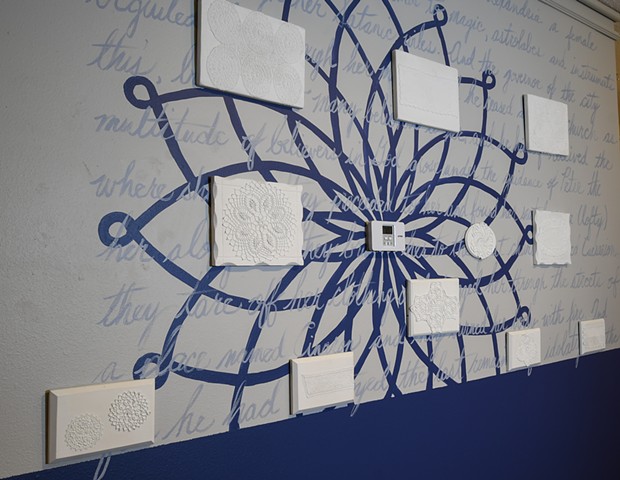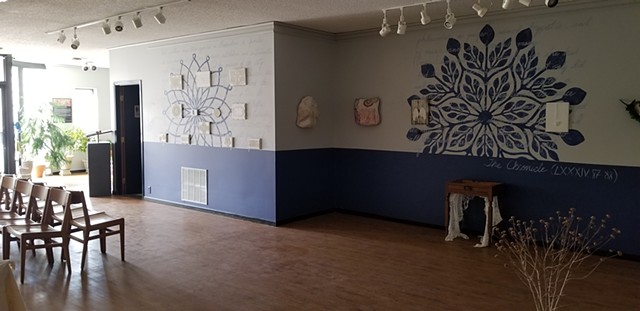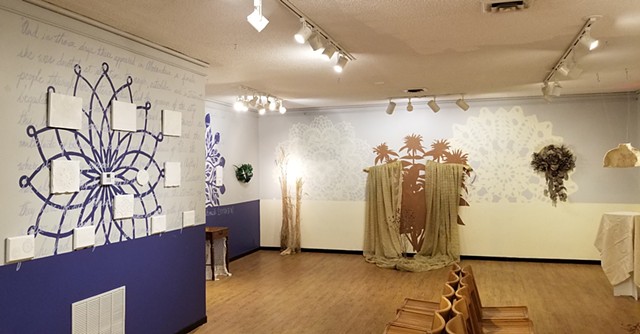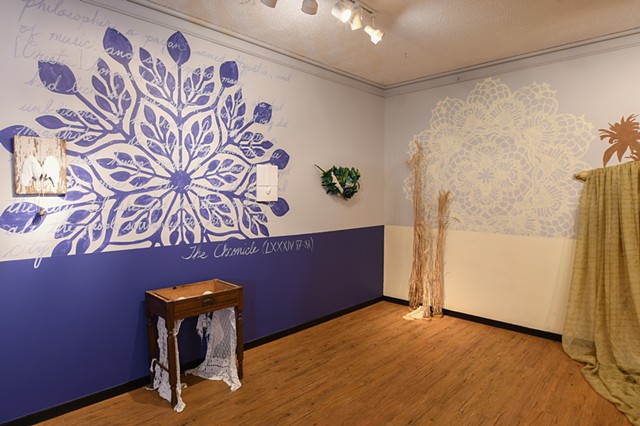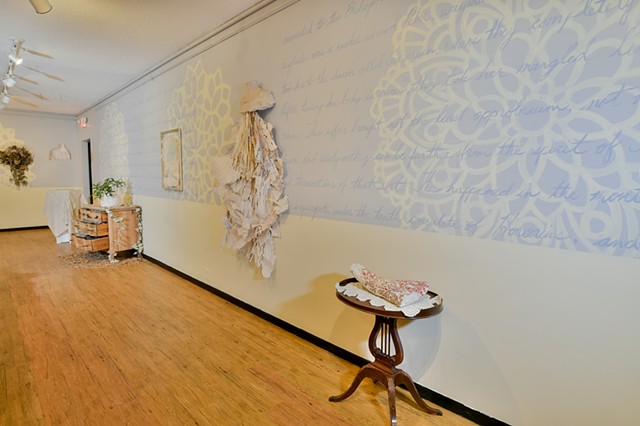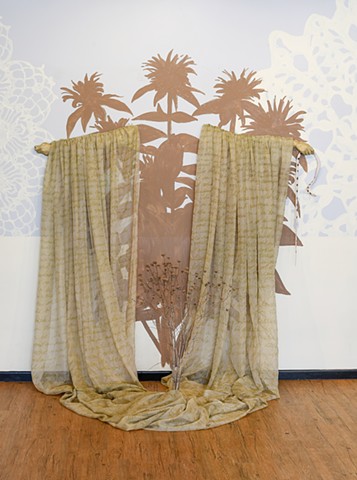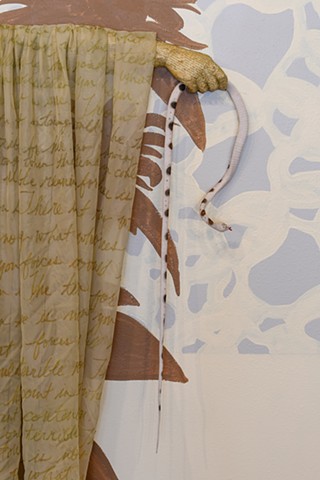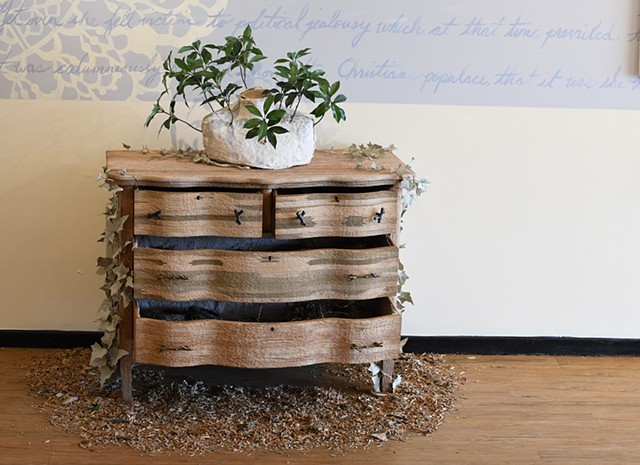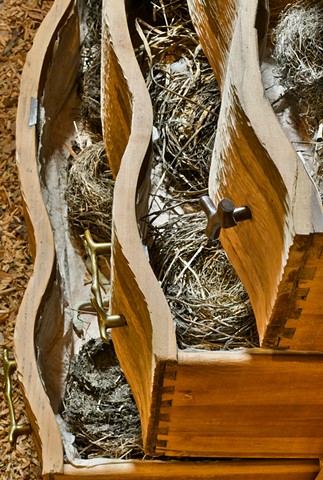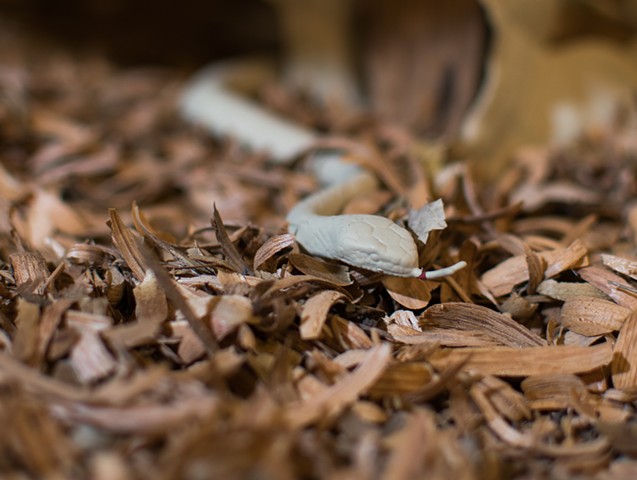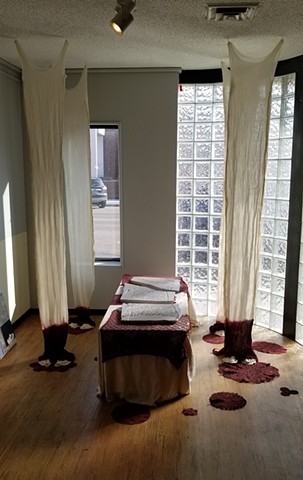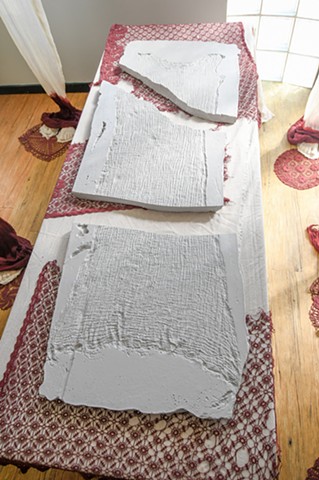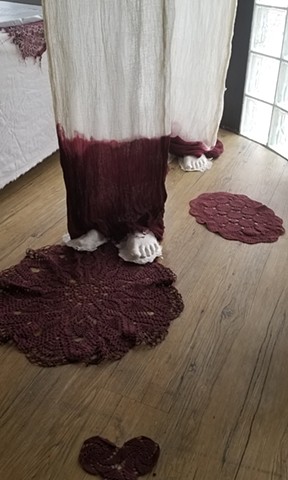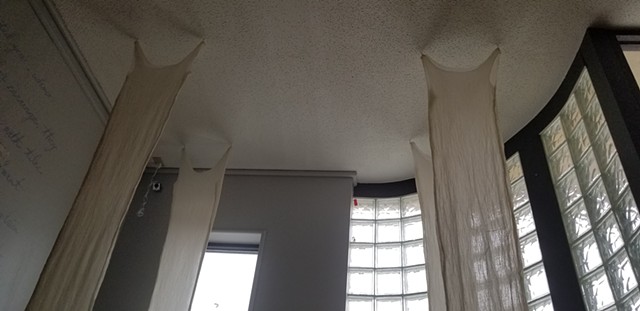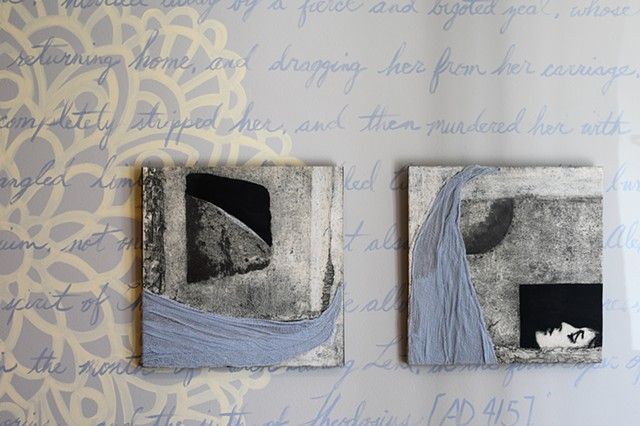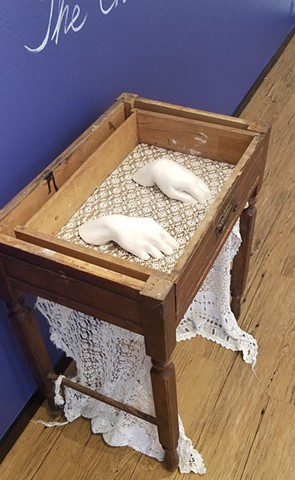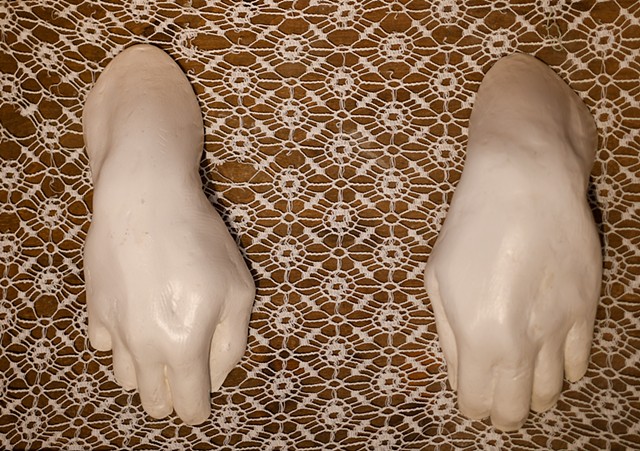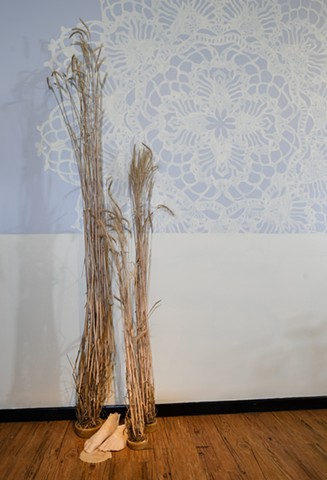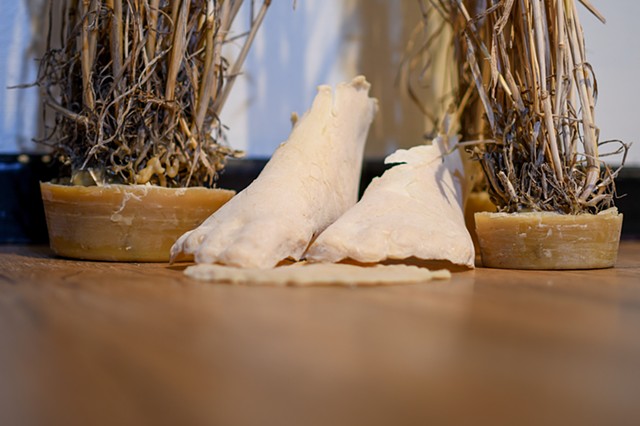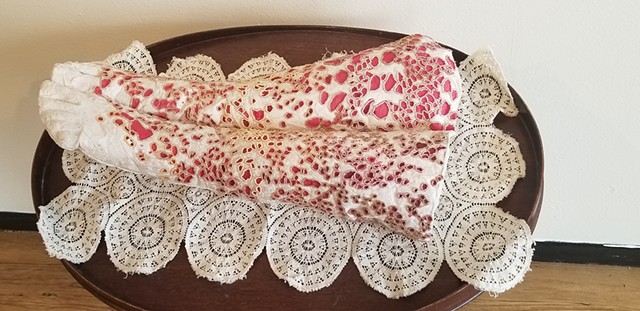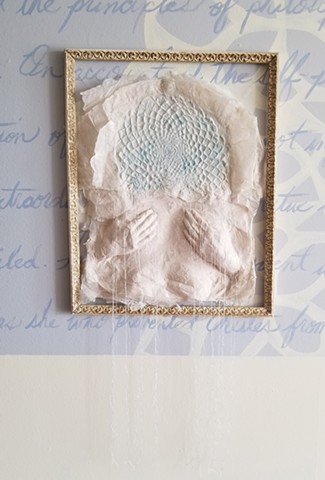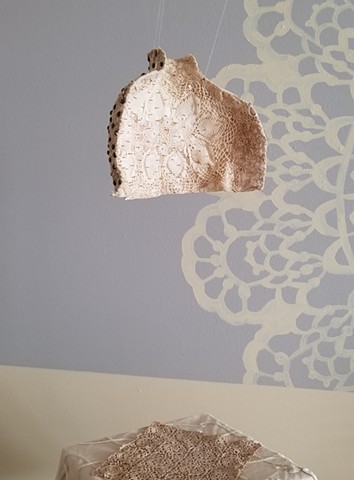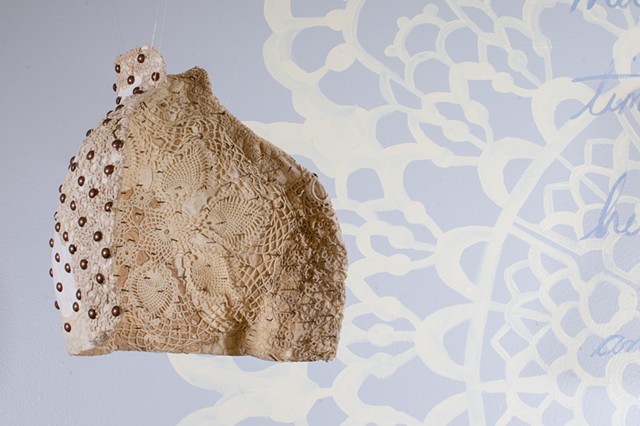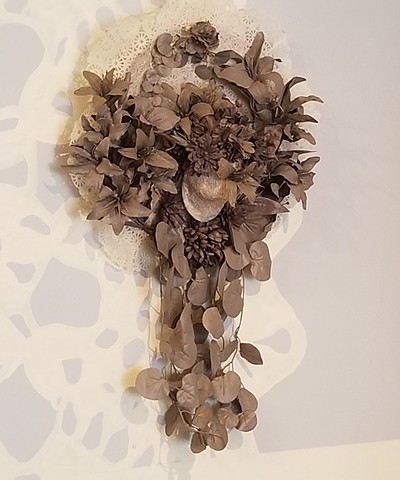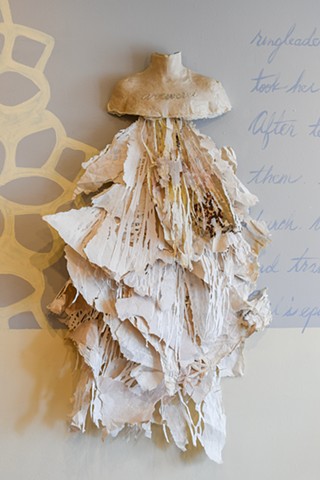On Her Temple's Ruins
Presented as a domestic landscape populated by poetically surreal figures, On Her Temple's Ruins explores themes of the domestic sphere, landscape, the mythical feminine and the effects of violence.
On Her Temple’s Ruins is a sculptural installation combining altered furniture sculpture, cast paper figurative works, fibers, and mural painting. Loosely referencing mythological stories, historical feminine figures, the domestic sphere and the landscape, this exhibition creates a reverential space to honor our culture’s lost potential due to violence against the feminine.
The initial iteration of the exhibition treats the gallery walls as a cohesive canvas, featuring monumental doily patterns and hand-painted text. The text used is two contrasting historical accounts of the life and brutal death of Hypatia, the 4th century Neoplatonic philosopher, mathematician, and teacher. The spatial focus of the exhibition is Processional for Hypatia, an installation of variable dimensions incorporating 14 ft long gauze dresses suspended from the ceiling, surrounding a broken plaster mold of a smaller gauze dress, resting on a bier. The ends of the dresses have been dyed blood red, and they trail doily ‘puddles’ of blood on the floor around them. The visual counterpoint to Processional for Hypatia is Lament for Persephone. This piece incorporates floral silhouettes painted on the wall, with cast paper arms draping 20 feet of drapery that is 'caught' on dead foliage. The drapery is covered with handwritten lines of Louise Gluck's poem Persephone the Wanderer, which inspired the work.
Further works in the exhibition include wall-hung sculpture, as well as sculpture in the round, some that hang from the ceiling. The pieces incorporate furniture, cast paper, fabrics and plants, as well as traditionally feminine crafts such as doilies, embroidery, beading, and stitching.
